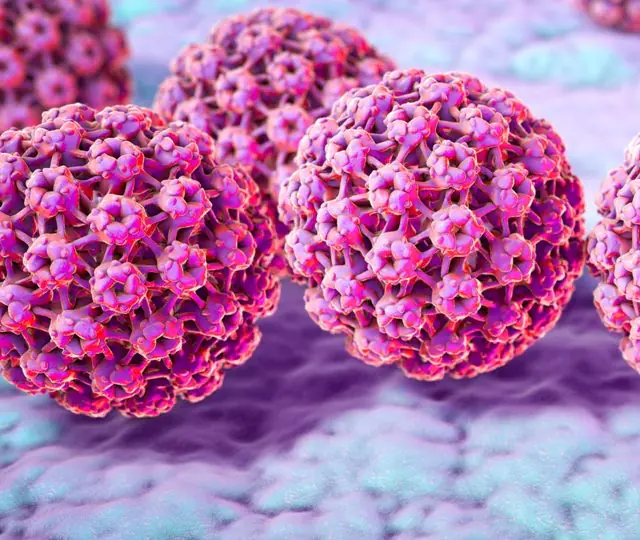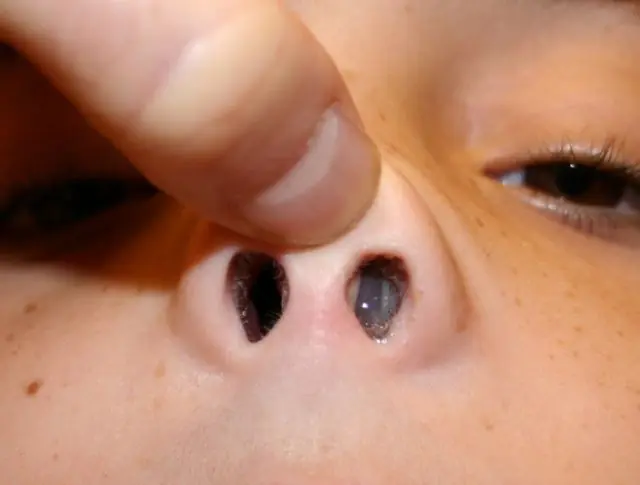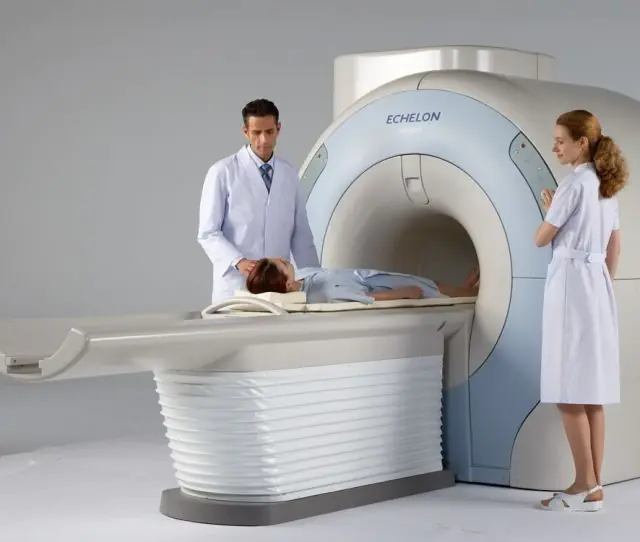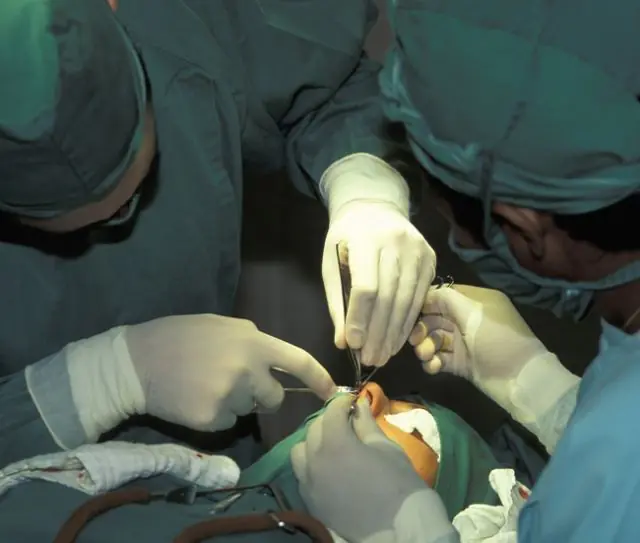
- What is inverted nasal papilloma
- Main features
- Diagnostic features
- Treatment of inverted nasal papilloma
Inverted papilloma of the nasal cavity is a benign formation that is most often located in the inner nose. The etiology of this pathology has not yet been fully elucidated. As a rule, such neoplasms are diagnosed in representatives of the stronger sex in old age - 50-70 years. In women, these tumors appear much less frequently.
What is inverted nasal papilloma?

Inverted papilloma of the nasal cavity is a benign growth. However, this neoplasm behaves quite aggressively and is prone to malignancy. These growths show signs of penetrating growth, but do not form metastases. It also manifests itself in the form of penetration of nasal tissue into the stroma.
As a rule, the tumor is unilateral; it can be single or multiple. In most cases, invertible nasal papilloma forms on its lateral surfaces or in the sinuses. In advanced cases, the tumor can grow from the nasal cavity into the sinuses. If timely treatment is not started, these growths can have a destructive effect on both the soft tissues of the nose and the bones - the palate, eye sockets, and the base of the skull.
In appearance, inverted nasal papilloma resembles a compacted papillary polyp with a rough surface from red to gray. May resemble an inflorescence or a small bush.

Photo of inverted papilloma of the nasal cavity
Clinical signs of the disease are very similar to nasal polyposis. Often the diagnosis is made incorrectly, and patients are treated specifically for polyps, and not papillomas.
Inverted nasal papillomas carry a high risk of recurrence - from 3 to 20%. Also quite often they degenerate into malignant tumors (5-10%). Moreover, atypical cells can appear even years after surgical removal of an initially benign tumor.
The causes of this disease are not fully understood. Among the factors contributing to the development of the disease, doctors name viral infection (HPV), chronic sinusitis, and frequent allergic reactions. There are also suspicions that smoking plays a significant role in the appearance of inverted papillomas of the upper sinuses.
Typically, these neoplasms affect the nasal cavity of older men. In women, the pathology is less common. For young people and children - almost never.
- Read also about the main types of papillomas on the face
The main signs of inverted nasal papilloma

At the initial stages of the disease, there are no specific signs. Therefore, it is quite difficult to diagnose this disease based on clinical symptoms. In appearance, inverted papillomas of the nasal cavity resemble polyps, and therefore the patient is often treated for them, and not for aggressive papillomatosis.
As the disease develops, the following symptoms appear:
- Problems with nasal breathing in one of the nostrils (difficulty or complete cessation), which are not eliminated by using traditional medicines;
- The appearance of nasal discharge (ichor, mucus, pus);
- Spontaneous bleeding from one part of the nose may sometimes occur;
- Deterioration or distortion of the ability to recognize odors;
- Pain in the area of the facial nerve on one side, frequent headaches, paranasal discomfort;
- Feeling of a foreign object in the nasal passages;
- Unreasonable lacrimation;
- Change in voice - nasal sound, nasal congestion.
- See also what papilloma looks like on a child’s nose
Features of diagnosing inverted nasal papilloma

In the early stages, this disease is often confused with polyposis. Therefore, it is important to carry out special studies in a timely manner to differentiate inverted nasal papilloma.
To establish an accurate diagnosis, the following methods are used:
- Radiography. There are no special radiological symptoms. The main sign of tumor growth is homogeneous, structureless darkening of the nasal sinuses and cavity. At later stages of the disease, signs of thinning of the bone structures of the sinuses appear, and sometimes complete bone destruction.
- Computed tomography and MRI. Inverted papilloma of the upper sinuses is defined as a dense soft tissue formation with relatively clear contours. If intravenous contrast enhancement is performed, the density readings will increase slightly. Also, with prolonged development, remodeling of the sinuses, destruction, sclerosis and thickening of the walls may be observed. This examination technique allows us to identify symptoms of invasive growth - partial destruction of the thinnest areas of the nasal cavity.
- Rhinoscopy. An anterior rhinoscopy is performed, during which it is determined that inverted transitional cell papilloma of the nose is distinguished by a granular, bumpy, rough surface, low transparency and lobulated structure. The neoplasm may have papillary growths, the shade varies from pinkish to gray.
- Histological examination of the growth. If inverted nasal papilloma is suspected, immunohistochemistry is prescribed. This method is good because it allows you to determine the presence of antigens in tissue samples, as well as their volume and distribution. Based on the conclusion of immunohistochemistry, the malignancy of the neoplasm can be confirmed.

Among all the above diagnostic methods, computed tomography or MRI is considered the most informative. Their diagnostic value reaches 94%. This accuracy makes it possible to abandon radiography as a less informative method of preoperative diagnosis.
Treatment of inverted nasal papilloma

Treatment of inverted papillomas of the nasal cavities is exclusively surgical. Today, there are a number of technological operations to remove tumors. Such procedures are quite complex and require special equipment and extensive knowledge of the surgeon in the anatomy of the skull and related structures. Therefore, these operations are carried out in specialized ENT clinics and departments of large medical institutions.
As a rule, the capabilities of endovideo technology are used to remove inverted papilloma of the nasal cavity. The most popular methods of tumor resection are the Denker and Moore methods.
Operation according to Denker involves opening the maxillary sinus and cutting out the tumor through the vestibule of the oral cavity.
Removal using Moore's method is a lateral rhinotomy in which an incision is made at the end of the eyebrow and extends to the upper lip. In this way, the soft tissue of the cheek is separated from the upper jaw to gain access to the nasal cavity and maxillary sinuses. Removal of the tumor and affected parts of the bones is performed electrosurgically.
After surgical treatment of inverted papilloma of the nasal cavity, a tampon is placed on the wound, and sutures are placed on the incision. Approximately 4-6 days after the intervention, the tampon is removed. Further therapy is reduced to rinsing the nasal cavity and sinuses with various liquids: antibiotics and hydrogen peroxide. They take quite a long time, since the necrotic areas of the skeleton are slowly torn away and come out in the form of an inflammatory discharge with a strong foul odor.
The cosmetic results of such operations are usually satisfactory - after complete scarring, a small pale scar with slight tissue retraction in the nasolabial area may remain.
In addition, in some cases it may be prescribed endoscopic laser evaporation inverted nasal papilloma or primary transnasal removal. These methods are not always effective, and their use may be advisable only for small tumors.
It is worth noting that the frequency of relapses after treatment of invertible nasal papillomas depends on the method of removal. Thus, with primary transnasal excision, tumors return in 50-85% of cases. With laser treatment, the frequency of recurrence of pathology is reduced to 4-19%. In operations using external access (according to Moore, Denker), the risk of relapse is 13-20%.- Read also: how to remove papilloma on the nose
What is inverted papilloma of the nasal cavity - watch the video:
Inverted papilloma of the nasal cavity is a dangerous disease that can transform into an oncological tumor, and also leads to pathological deformations and destruction of soft tissues and bones of the skull. Therefore, it is important to promptly pay attention to the first symptoms of the disease and consult a doctor. Self-medication in this case is strictly prohibited.
- Related article: What is the difference between polyps and papillomas?



